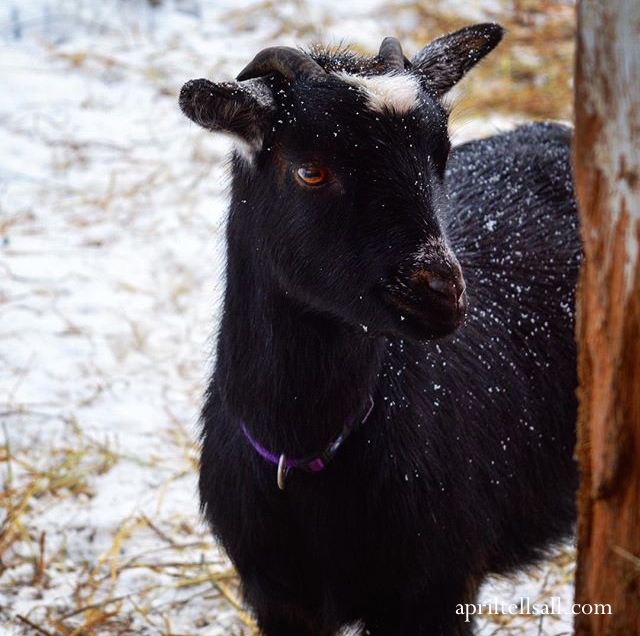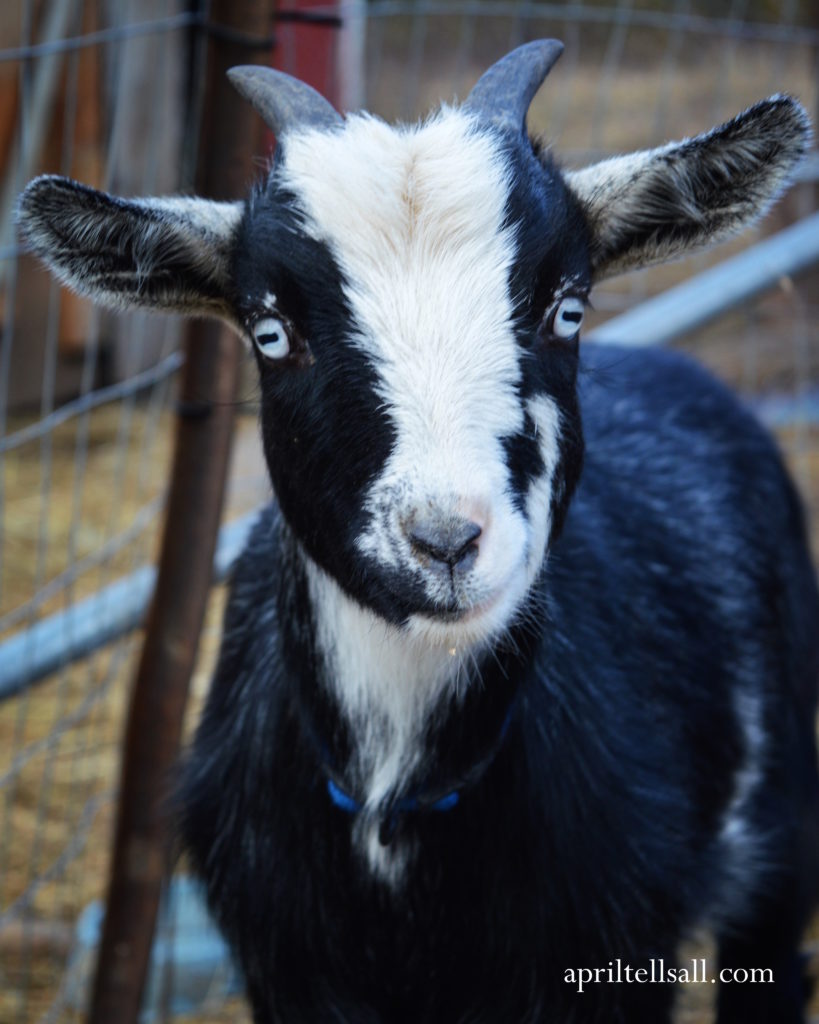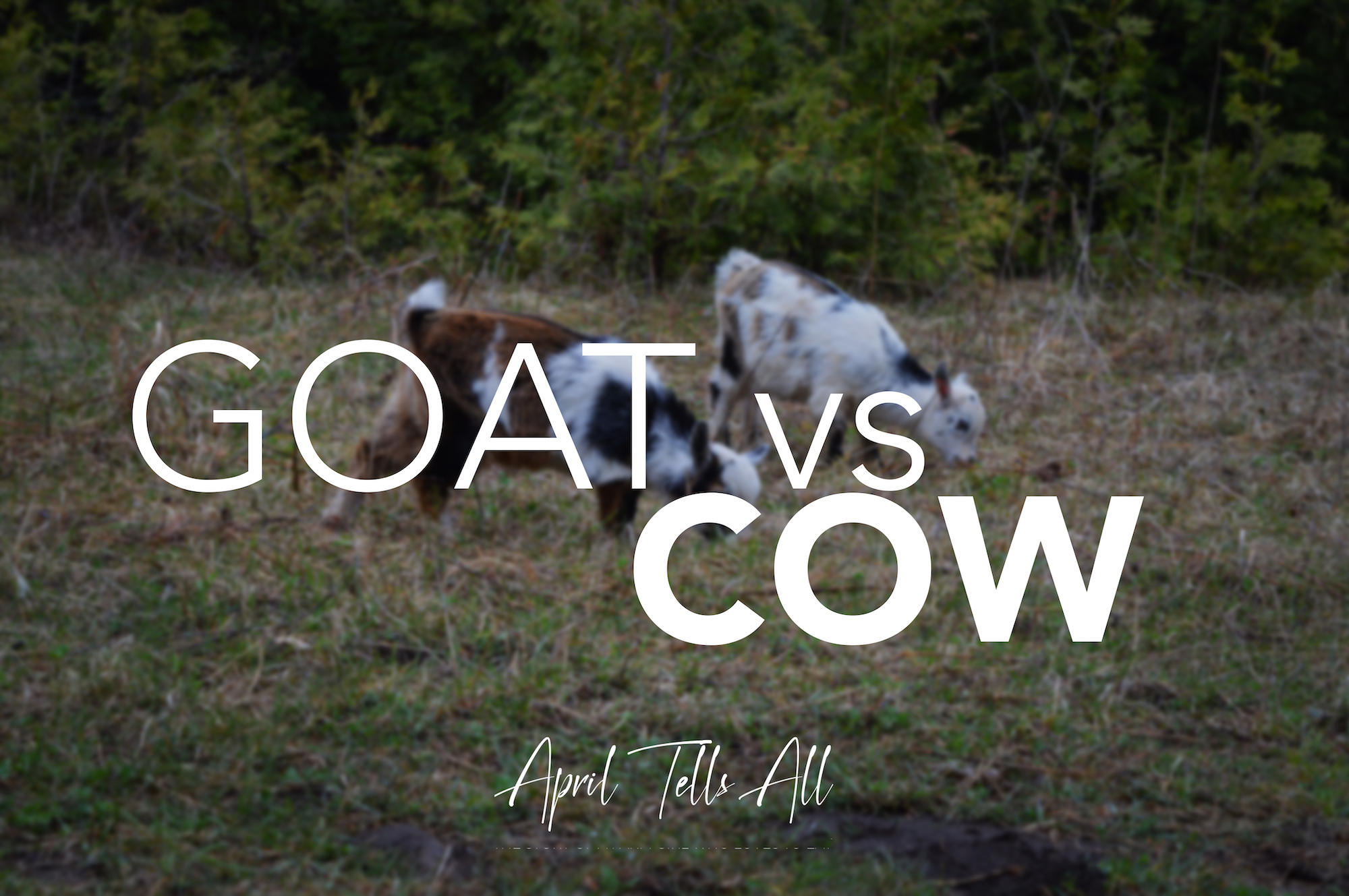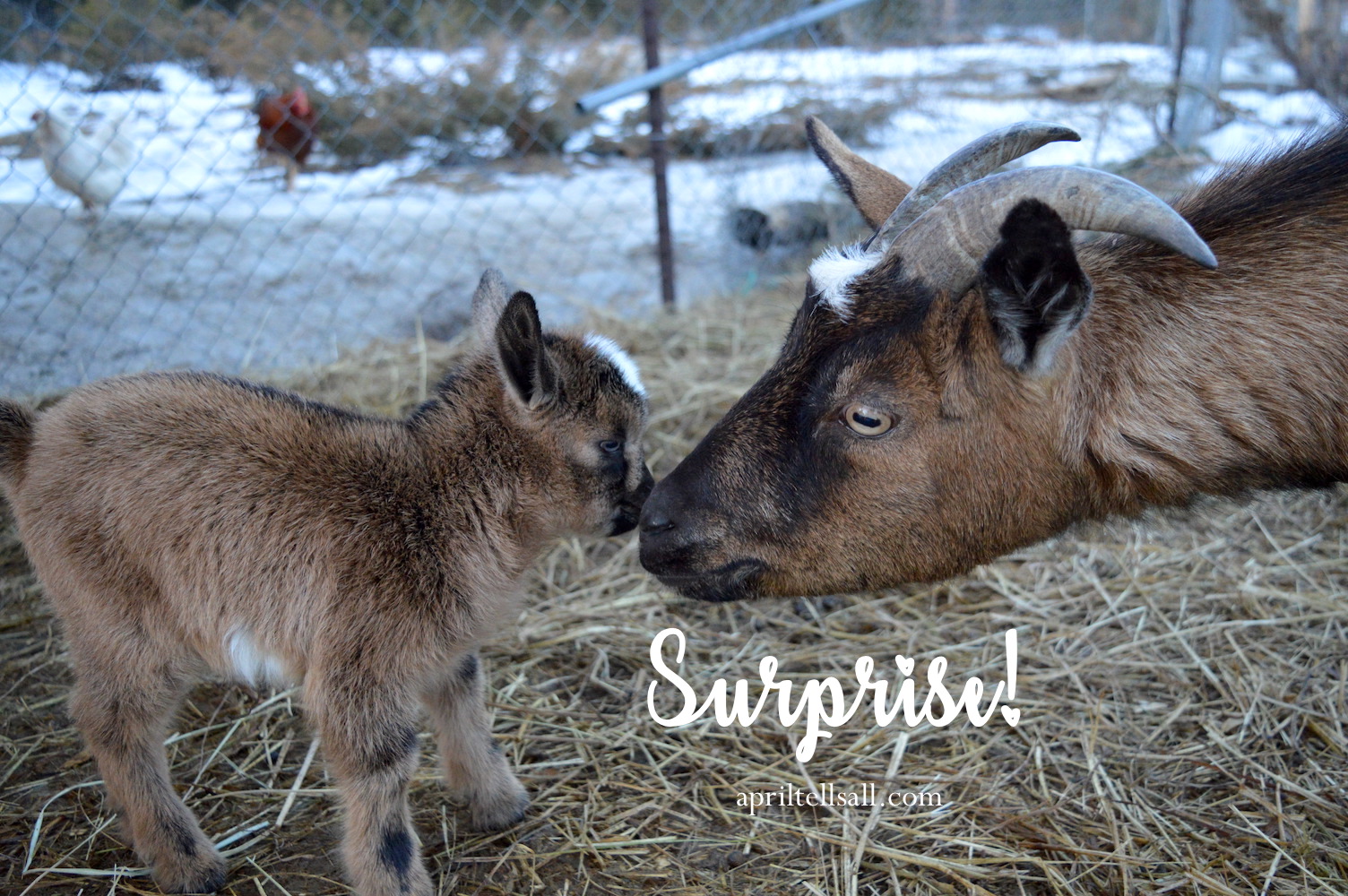Breeding season is coming to an end in these parts.
While part of me is ready to pull my bullhorn out, announce that’s a wrap, escort the male stud out, then yell action on “Part 2 – the birth of the babies”, I suppose I have a while to wait yet. These things inevitably take time.
So, while the Mama’s are growing the babies, let’s talk about goat love.
But April, haven’t we already talked about goat love? Why yes we have. We talked about breeding goats, and we compared borrowing vs owning a goat buck. Both super important in the world of making goat babies.
But if you’ve decided you’re just going to borrow a man goat for breeding, there are a few things that make it easier if you are prepared.
Firstly, the male goat can withstand pretty much anything. Going on a 40 minute car ride to a new farm? No problem. Getting beat up by an overly territorial herd Queen? Piece of cake. New people feeding me? Whatever.
They have a mind for one thing and one thing only. Which is really what you want when you’re trying to get babies.
There are three different scenarios when you borrow a buck.
The first is the buck comes to live with you.
This means that he is dropped off at your farm, lives with the girls and interacts doing his man goat thing, and will hit them as they come into heat. Sometimes just his presence will be enough to bring a doe into heat. He usually stays for 6 weeks. Long enough to cover 2 heat cycles, in case one didn’t take the first time and then he goes back on his way.
While he is in your care, you treat him like one of your own. He is fed your hay, sheltered with your shelter, and overall respected and treated kindly. You shouldn’t fear him, but as with anything with testicles on the farm, you should respect him and never turn your back on him. Male animals can be unpredictable. Especially if he’s new to the you and the farm.
Anytime I’ve brought a male goat to the farm it has been the least dramatic thing ever. They look around, sniff a bit, and go straight for the food. No fuss. Females are not this way.
When he leaves your farm you have a 6 week window of potential due dates. Usually goats aren’t shy about their love-making. You can be standing there chipping ice from the water bucket and all of a sudden the female that was standing on one side of you is being humped by the male who was standing on the other side of you. Awkward.
You can jot any potential breeding dates down, so you have a rough idea of a due date. Goats are pregnant for 150 days (145 for minis) and can go 5 days either way. I’ve had a miniature goat go into labor at day 155 and I’ve had a miniature goat go into labor at day 140. You just never really know.
[wp_ad_camp_1]
The second scenario is where you take your does to the buck.
This generally is called a driveway breeding. You take your in heat doe to the buck for a quickie then drive her back home. This can be a better way to control the spreading of diseases, parasites, etc. There is absolutely no guarantee that you won’t run into something that will make your does sick when using a male from an outside source. But if you don’t go up to the barn and just rendezvous with the buck in a small quarantine pen, or sometimes literally in the driveway on a leash, there is less exposure.
There can be several issues with this method. Firstly, you HAVE to know when your doe is in heat. And not coming into heat or coming out of heat, but when she is in full on standing heat. Standing heat generally only lasts several hours so that’s the time to get the owner of the buck on the phone. I’ve studded out my buck a few times, and the number one problem I ran into during driveway breeding was that the owners of the does didn’t have a clue as to when their doe was in heat. This resulted in a lot of wasted time, and an ornery doe with her tail clamped tightly down on her backside.
A properly done driveway breeding usually lasts anywhere from 10 – 30 minutes. You also have a pretty clear date of conception and thus a pretty accurate due date.
The final option is to leave your does with the buck.
This is generally the case when you only have one or two does to breed and have a rough idea of when they will be in heat. I have taken 2 does to a farm the day they were coming into heat, and picked them up a day later when they were scheduled to come out of heat. This means that you don’t have to be quite so precise with standing heat, as the buck himself will determine when they are ready to be bred. You just have to be in the general ballpark of the heat range.
This way of breeding also gives you a pretty clear due date.
The cost of borrowing a buck.
All of these options will cost you a bit. Generally when you bring the buck to your farm you pay per doe he is breeding. You also cover his feed costs, bedding costs, muck out his poop, and should something happen that resulted in the sickness or injury of this buck you would cover his vet costs (unless he came to you in this way. This is something to have worked out with the buck owner, prior to him coming to your farm. Contracts are also never a bad thing).
For a driveway breeding, you generally pay per doe, plus the cost of your gas to get to that farm.
The cost is a bit higher if you leave your does overnight or for 2 days. Generally you pay for the females board as well as the breeding. I have been charged a boarding fee when leaving goats overnight.
In the grand scheme of things, however, borrowing is a much cheaper option than buying your own buck and housing him year round, and you still get the cute kids. So all is right with the world.
Generally, I pay $40 – $50 dollars per doe that the buck is going to breed. This does not include a boarding fee. The cost is going to be different depending on your area, but I sell kids for $250-$300 so it balances out.
Finally though we have to talk about one downside to borrowing a buck.
What if my doe doesn’t get pregnant? There are many things that can contribute to this.
Firstly, driving to a new farm can be stressful on a doe. Does are very fragile creatures who make a dramatic scene over everything new. Meeting a new buck can be stressful as well. Anytime you take a female goat out of her usual environment, it causes stress that can stop her from becoming pregnant.
Secondly, even with the best laid plan, you could miss her standing heat. Or she could come into heat on Christmas morning. These are all things that should be talked about with the owner of the buck before you breed. Specifically when boarding your does for a night, or for driveway breeding. Driveway breeding also don’t always take the first time, and a second, or even third visit is required.
The best way to ensure total buck exposure to a doe in heat, is to house him at your farm for at least one month.
There is also the possibility of infertile animals. I’ve had a doe who could not conceive. Despite the fact that I drove her to multiple breeding sessions, left her overnight, paid money to buck owners for kids that were never brought forth. The same issue can happen if you purchase a buck, or borrow an unproven buck. And finally, everything could go as planned, and the doe will miscarry at 3 months. There is never a guarantee in pregnancy.
Things to talk about before borrowing a buck.
Here a few things you should have worked out before borrowing a buck.
- Is he from a disease tested herd? There are several highly contagious goat diseases out there that you don’t want to expose your herd to. If you test your herd, be sure to have updated paperwork on hand that says your goats are disease free. It is not mandatory to test your herd, and a lot of people don’t, but it is something to be aware of to help protect both your goats and the buck. If it is important to you that the buck be tested, be sure to ask for the paperwork before bringing your does near him.
- What if your doe doesn’t take the first time, is the rebreed free? How many rebreeds do you get? When I stud my buck out, rebreeds are free one time. Twice depending on circumstances. Maybe our schedules didn’t match up, and by the time the doe got here standing heat was just about over. Or if the goat was really stressed during the second visit. Things like that will allow for a third free visit. After that there are no more free rebreeds. If the doe needs to come for a fourth visit I charge another breeding fee.
- What if you’re housing the buck and he gets sick? How will this be handled?
- What if the buck turns out to be infertile. Will you get your money back?
- Will there be a contract in place – specifically if he is coming to your farm? A good buck is worth his weight in gold. You can get good quality blood lines without the cost of actually buying the buck. Because of this, theft, tampering, or mistreatment are all concerns to the buck owner.
- If you’re doing a driveway breeding, what if the doe comes into heat on Christmas Day? Or any other special day for that matter. How will this be handled?
These are all things you should have worked out with the owner of the buck before proceeding.
Borrowing a buck is not as complicated as it sounds. You want to make sure that your does and the buck are all treated fairly during the exchange. Generally, once you find a buck you like, you can borrow him for many years to come (provided you don’t keep his babies), without issue.
And that means more baby goats in the world, which we all like.











